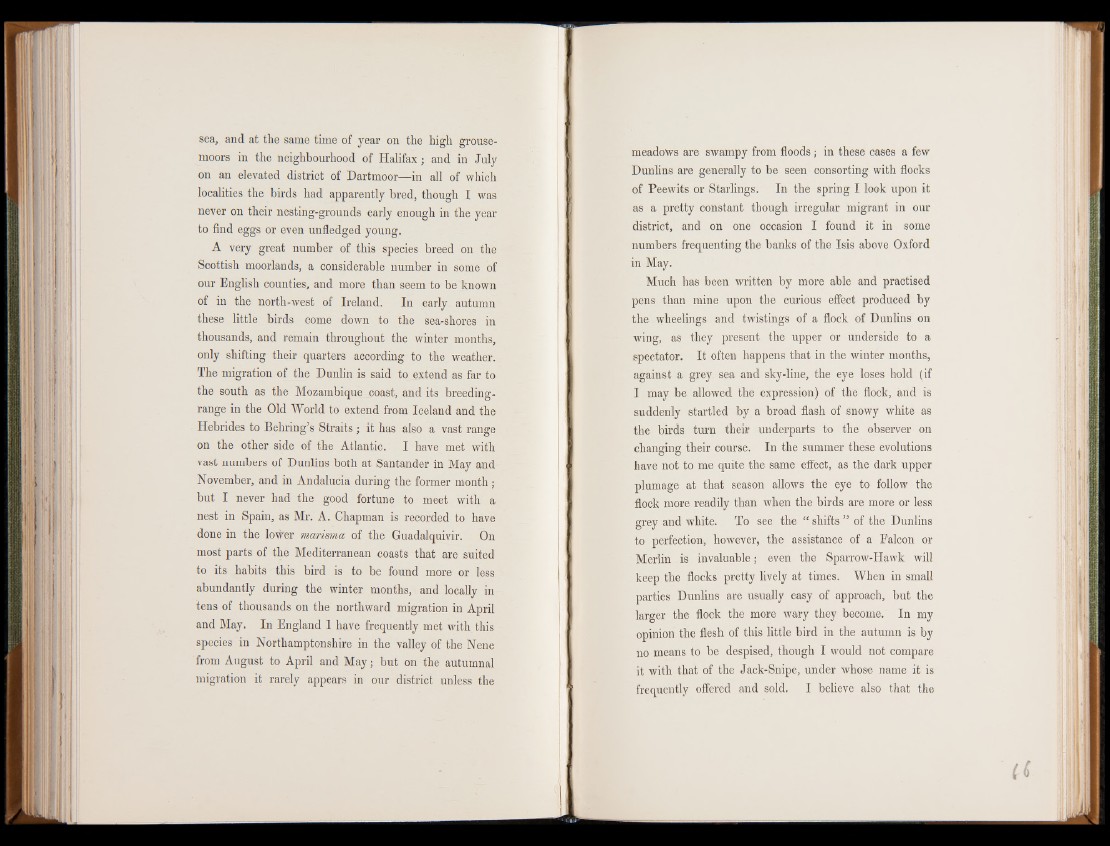
sea, and at the same time of year on the high grouse-
moors in the neighbourhood of Halifax; and in July
on an elevated district of Dartmoor—in all of which
localities the birds had apparently bred, though I was
never on their nesting-grounds early enough in the year
to find eggs or even unfledged young.
A very great number of this species breed on the
Scottish moorlands, a considerable number in some of
our English counties, and more than seem to be known
of in the north-west of Ireland. In early autumn
these little birds come down to the sea-shores in
thousands, and remain throughout the winter months,
only shifting their quarters according to the weather.
The migration of the Dunlin is said to extend as far to
the south as the Mozambique coast, and its breeding-
range in the Old World to extend from Iceland and the
Hebrides to Behring’s Straits ; it has also a vast range
on the other side of the Atlantic. I have met with
vast numbers of Dunlins both at Santander in May and
November, and in Andalucia during the former month ;
but I never had the good fortune to meet with a
nest in Spain, as Mr. A. Chapman is recorded to have
done in the lower marisma of the Guadalquivir. On
most parts of the Mediterranean coasts that are suited
to its habits this bird is to be found more or less
abundantly during the winter months, and locally in
tens of thousands on the northward migration in April
and May. In England 1 have frequently met with this
species in Northamptonshire in the valley of the Nene
from August to April and May • but on the autumnal
migration it rarely appears in our district unless the
meadows are swampy from floods; in these cases a few
Dunlins are generally to be seen consorting with flocks
of Peewits or Starlings. In the spring I look upon it
as a pretty constant though irregular migrant in our
district, and on one occasion I found it in some
numbers frequenting the banks of the Isis above Oxford
in May.
Much has been written by more able and practised
pens than mine upon the curious effect produced by
the wheelings and twistings of a flock of Dunlins on
wing, as they present the upper or underside to a
spectator. It often happens that in the winter months,
against a grey sea and sky-line, the eye loses hold (if
I may be allowed the expression) of the flock, and is
suddenly startled by a broad flash of snowy white as
the birds turn their underparts to the observer on
changing their course. In the summer these evolutions
have not to me quite the same effect, as the dark upper
plumage at that season allows the eye to follow the
flock more readily than when the birds are more or less
grey and white. To see the “ shifts ” of the Dunlins
to perfection, however, the assistance of a Ealcon or
Merlin is invaluable; even the Sparrow-Hawk will
keep the flocks pretty lively at times. When in small
parties Dunlins are usually easy of approach, but the
larger the flock the more wary they become. In my
opinion the flesh of this little bird in the autumn is by
no means to be despised, though I would not compare
it with that of the Jack-Snipe, under whose name it is
frequently offered and sold. I believe also that the